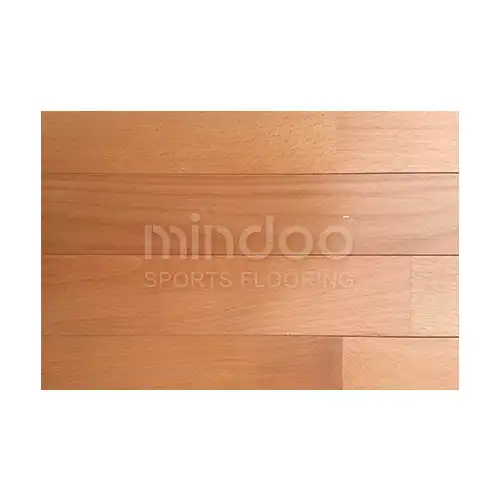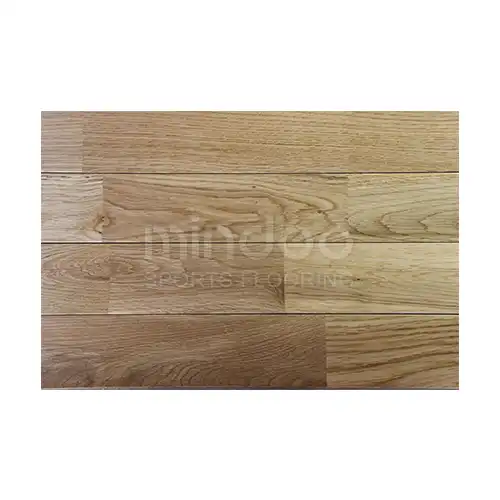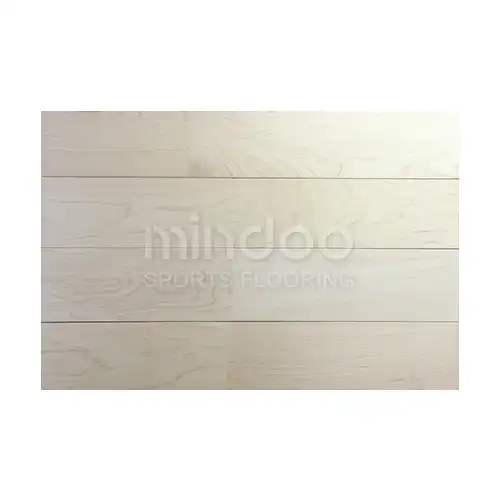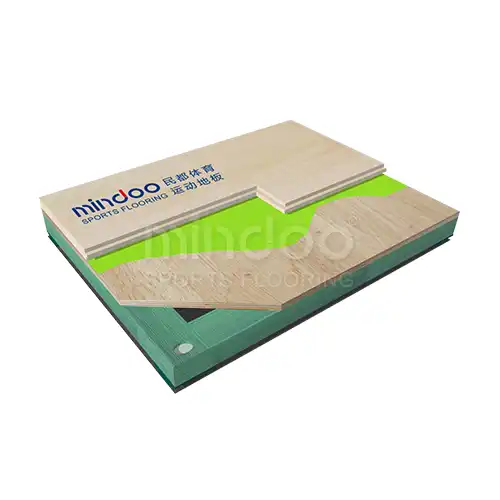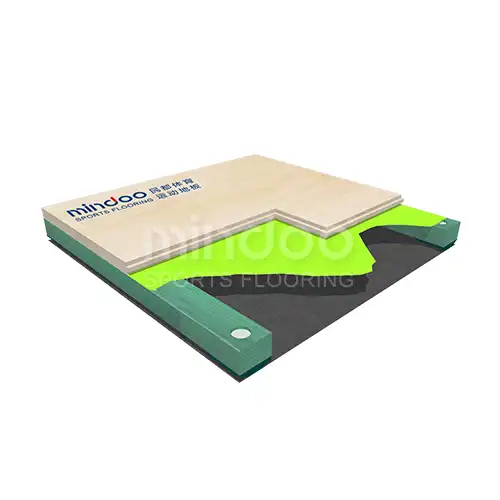How to Test the Performance of Hardwood Sports Flooring: A Practical Guide
When it comes to hardwood sports flooring, ensuring that your investment delivers the highest level of performance and durability is crucial. While professional testing provides detailed data on performance parameters, it’s also valuable to be able to conduct some simple tests yourself to assess how well your floor is handling wear and tear.

1. Assessing the Floor’s Shock Absorption
One of the key performance metrics for any sports floor is its ability to absorb shock. This is critical for protecting athletes from joint stress and injuries. Shock absorption is particularly important in sports like basketball, volleyball, and gymnastics, where high-impact movements are frequent.
How to Test It:
Drop Test: You can perform a basic drop test using a standard object, like a small ball or a rubber mallet. Drop it from a fixed height (approximately 1 meter or 3 feet) onto the floor and observe the bounce.

- If the floor absorbs the shock effectively, the ball should have a moderate bounce. Excessive bounce or minimal bounce indicates an issue with the shock-absorbing properties of the flooring.
- Keep in mind that while this test gives a rough idea, professional tests like the Ball Rebound Test or Shock Absorption Test (EN 14808) are more precise.
2. Checking for Surface Wear and Durability
Durability is one of the most important factors in hardwood sports floors, especially in high-traffic or multi-use environments. Over time, wear and tear can affect the performance and safety of your floor.
How to Test It:
- Visual Inspection: Look closely for signs of surface wear like scratches, dents, and discoloration. Regularly inspect the high-traffic areas for signs of thinning, which could indicate a loss of the protective layer.
- Scratch Test: Use a coin or a key to gently scratch an inconspicuous area. A high-quality finish should resist scratches easily. If you notice the surface is vulnerable to such marks, it may be time for a maintenance check.
- Impact Resistance: For a quick test of how well the floor holds up to impacts, drop a small, hard object, like a weight, from a height of about 3 feet. This simulates the type of pressure that occurs when players land after a jump or heavy movement. Excessive indentation may suggest poor durability.
3. Evaluating the Floor's Grip and Traction
Traction is vital for safety during fast-paced sports. Too much grip can increase friction, while too little can lead to slips and falls. Proper traction ensures smooth movement while maintaining player safety.
How to Test It:
Friction Test: Place a rubber shoe (or a rubber-surfaced object) onto the floor and try to slide it. The resistance you feel when trying to move the object will give you an indication of the floor’s grip. You should feel moderate resistance, indicating proper traction.

- If the shoe slides too easily, the surface may be too slick, posing a potential safety risk. On the other hand, if it’s nearly impossible to slide, the friction may be too high, which could affect player performance.
For a more precise test, you could use a tribometer, a device that measures surface friction. While this may not be a common tool for everyone, it’s the industry standard for evaluating traction and can help you ensure compliance with safety standards.
4. Checking for Floor Stability and Joint Integrity
As the base structure of the floor, the integrity of the joints and seams is crucial. Over time, improperly sealed joints can loosen, leading to buckling or gaps, which can result in uneven surfaces that may be dangerous for athletes.
How to Test It:
- Tap Test: Lightly tap on the floor’s seams or joints with a rubber mallet or even a small hammer. If you hear any hollow sounds or notice movement at the seams, this could indicate that the joints are loosening. Any sign of instability or separation is a red flag.
- Weight Test: Place weight at different points on the floor and check for any noticeable flexing or bowing. A well-installed hardwood floor should be stable under pressure without noticeable give. If you feel any flexing, it may point to issues with the subfloor or the installation.
5. Evaluating the Floor’s Moisture Resistance
Wood is naturally susceptible to moisture, which can affect its stability and performance. High moisture content can lead to expansion, warping, and even cracking over time, especially in environments where humidity levels fluctuate.
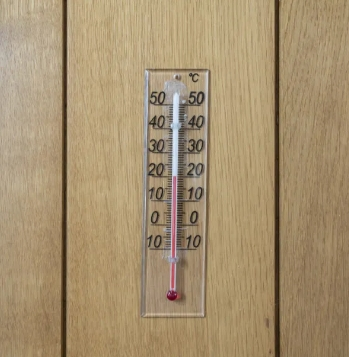
How to Test It:
- Moisture Meter: A moisture meter is a simple yet effective tool for testing the moisture content in wood flooring. A reading above 12-15% moisture content can indicate a problem, as this is typically considered the threshold at which wood starts to expand and deform.
- Visual Check for Warping: Look for any signs of buckling or bowing in the boards, particularly around the edges. If moisture infiltration is a concern, these areas will often show signs of distress first.
6. Noise Test: Squeaks and Creaks
While not as directly related to performance, noise produced by the floor can indicate problems with the installation or the subfloor. Squeaks and creaks can become distracting and potentially indicate movement between boards or damage in the subfloor.
How to Test It:
- Walk across the floor and listen for any unusual sounds. If you hear creaking or squeaking, this could point to an issue with the floor’s installation or an underlying moisture problem.
Conclusion: Practical Testing for Hardwood Sports Flooring
These simple tests can give you a good indication of your floor's condition and help you identify any potential issues early on. Regularly performing these assessments will allow you to maintain the floor’s integrity, prolong its lifespan, and ensure the safety of athletes.
